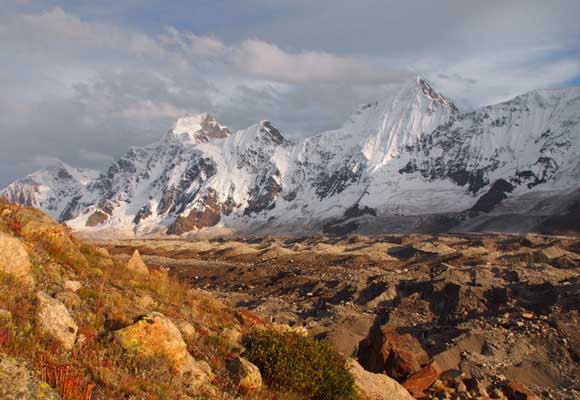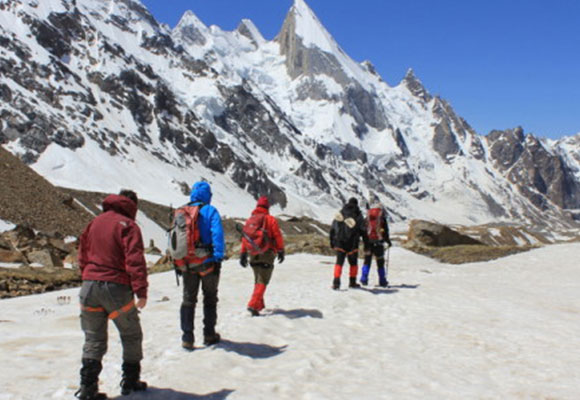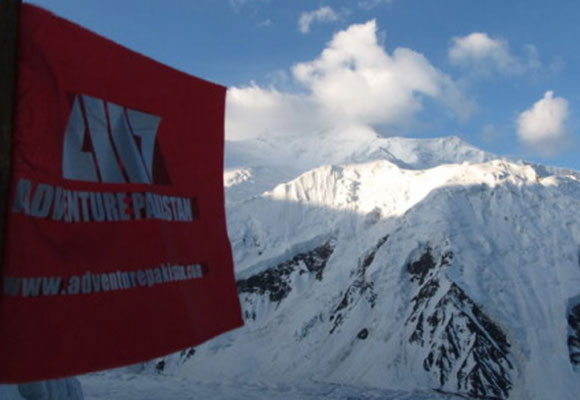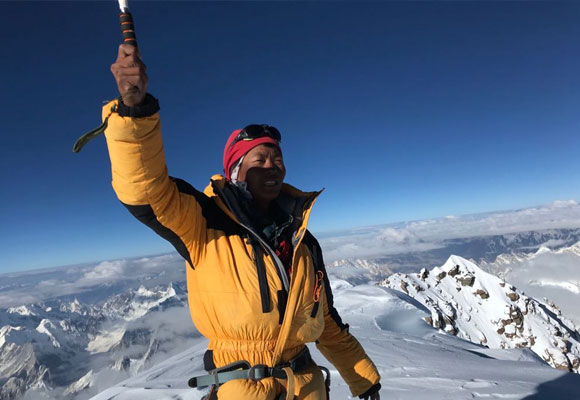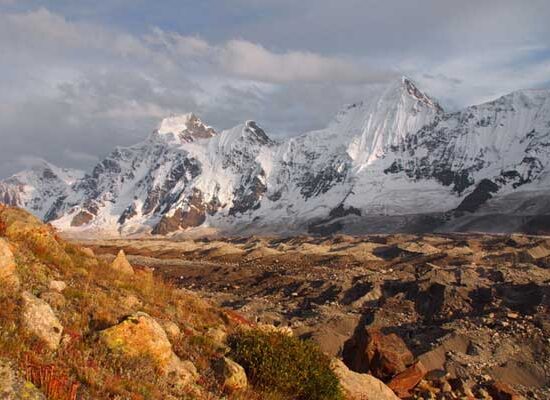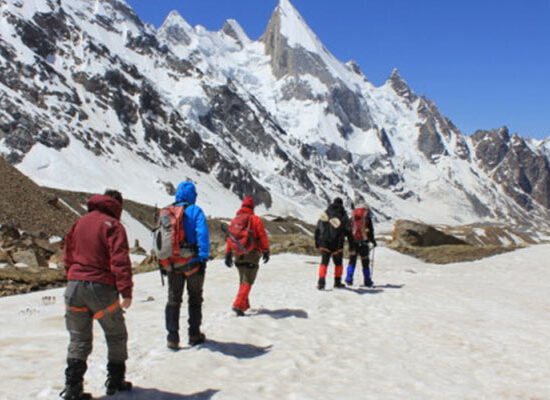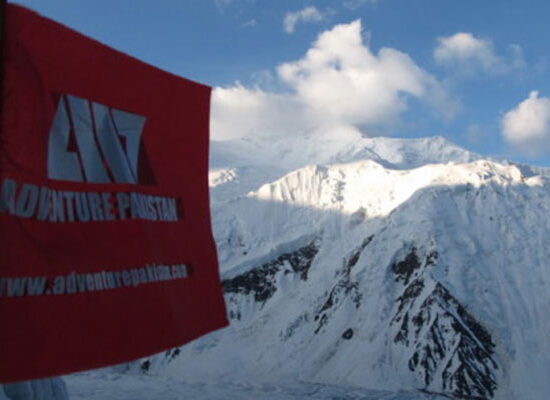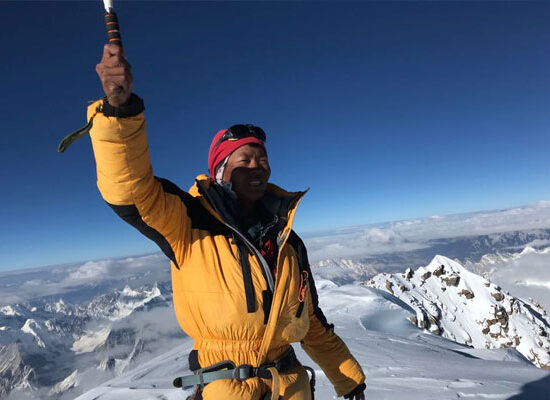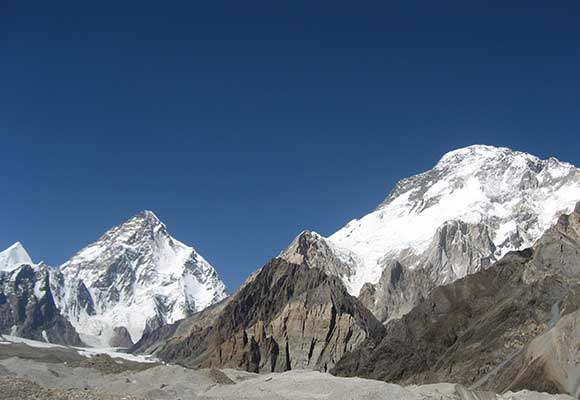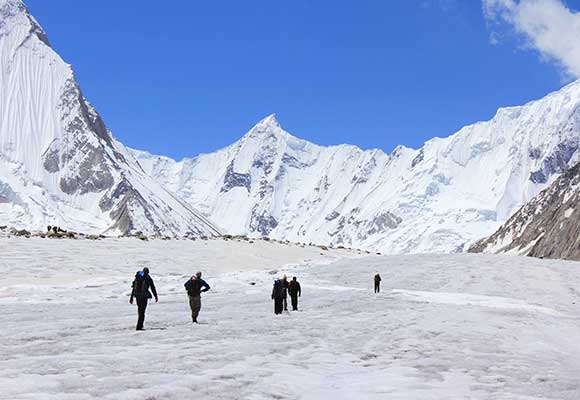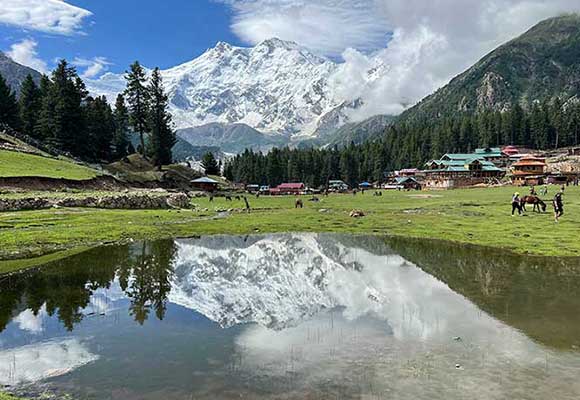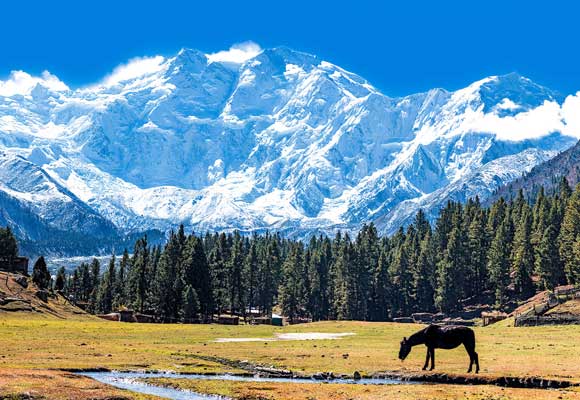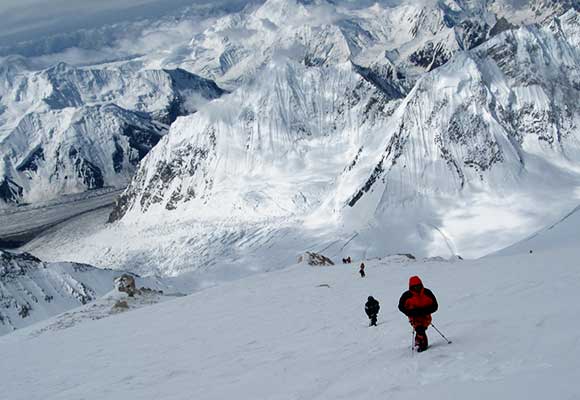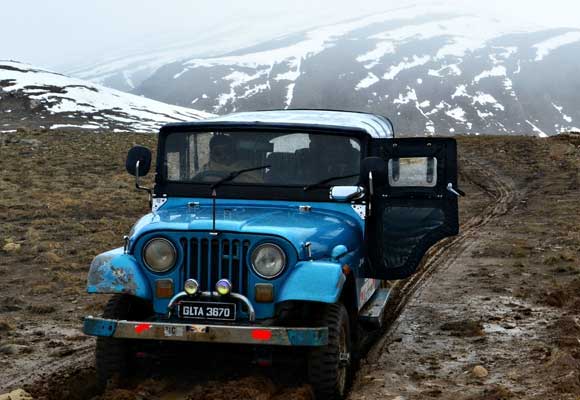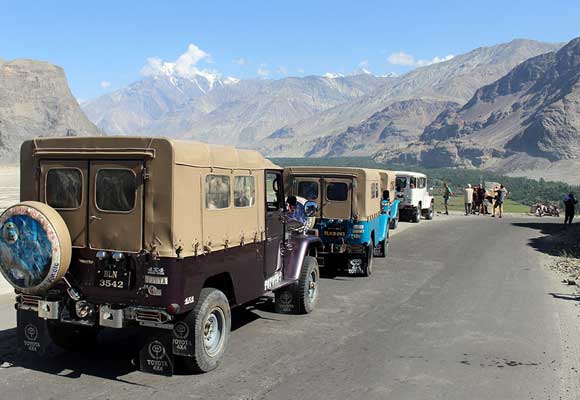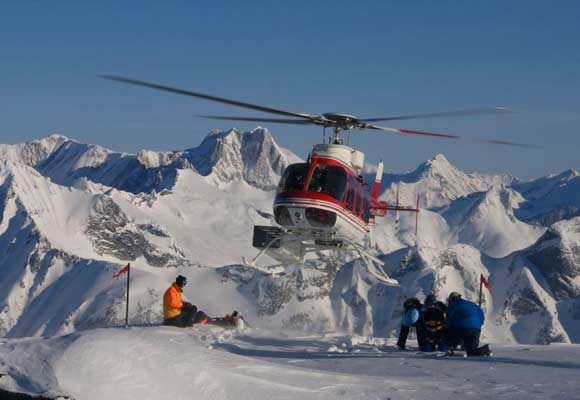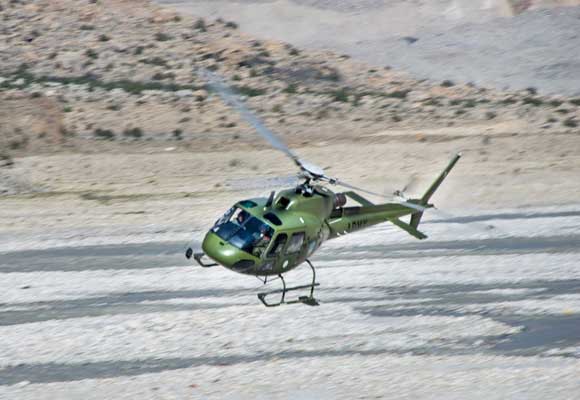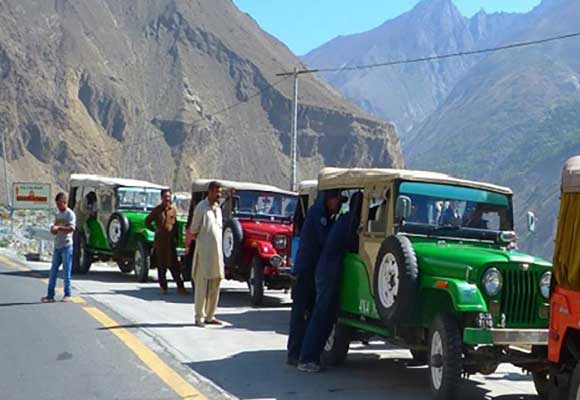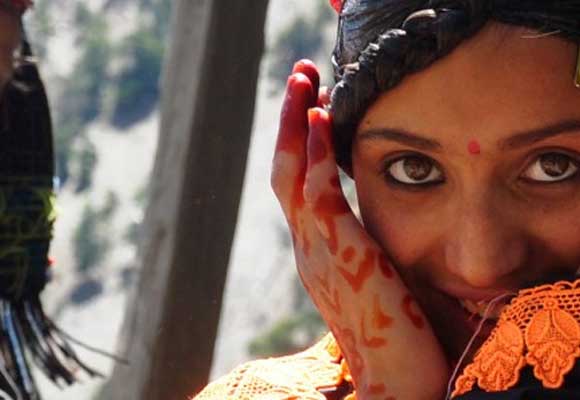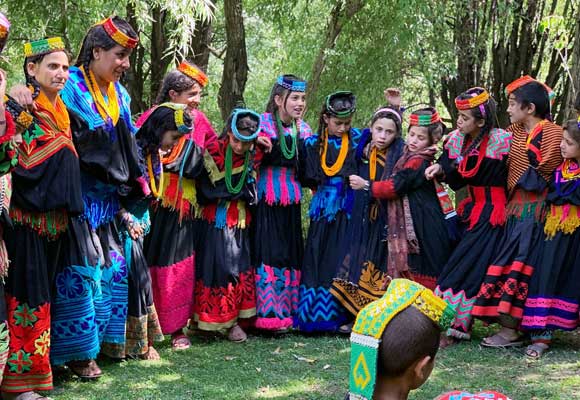Biafo Hispar Snow Lake Trek
Tour Category
Group Size
Duration
From
OVERVIEW & ITINERARY
dETAILS
Biafo & Hispar glaciers are listed among the list of longest glaciers in the world. A trekking route from Baltistan to Hunza Valley on these glaciers is the longest glacial traverse in the world apart from the snow lands of the two poles. The trekking route is rarely done, which makes it more interesting as the campsites are clean and less polluted. Starting our walk from Askole, we climb up Biafo Glacier and arrive at the vast bowl of snow called Snow Lake, which covers an area of 77 square kilometers. The great world explorers have mentioned the area in their accounts while Tillman claimed to witness the presence of a mythical creature, the Yeti, as he saw its footprint around Snow Lake. Biafo Glacier is also known as the home of the brown bear.
Geologists and other experts have measured the depth of the glacier to be as deep as one and half kilometers ( about one mile ) at points.
Hispar Pass is a vast plateau of snow and ice from where trekking routes lead to Nagar, Hunza and to Shimshal. Crossing the Hispar La at 5151m/16,998ft we descend into the Nagar region. Although we cross the highest point of the trek we still must negotiate several of the glacier tails flowing down from the mountains. The reward of this effort is the green and lovely campsite before arriving in Nagar and then drive to Hunza Valley.
This strenuous trek has many stories about it that tell us of the ethno-cultural link between the Brushos of Hunza and Nager and the Baltis of erstwhile Shigar state.
ITINERARY
Adventure Pakistan representative/guide will be at Islamabad International Airport to meet and greet our valued guests and transfer to the hotel (the airport is about 40-45 minutes drive from Islamabad. In the afternoon, a half-day city tour will include visiting Faisal Mosque, built in 1986, the Pakistan Monument, Lok Virsa Museum, and a breathtaking aerial view of Islamabad from Daman-e-Koh. Drive back to a hotel for an overnight stay before going to sleep; the guide will give complete information about the next day’s scenic journey.
Transfer to the airport for flight to Skardu. If the weather is clear we will have the opportunity to see some of the majestic mountains of the north from the airplane window incl. Nanga Parbat. The rest of the day can be spend at leisure. In case of flight cancellation we will drive in two days on the famous KKH to Skardu with an overnight stay at Chilas.
Free day at leisure or drive to Skardu from Chilas.
For those who are interested we can have a sightseeing tour: Sadpara Lake, Skardu Bazaar, Kharpocho (Skardu) Fort. Overnight Skardu.
We have a spectacular drive on a winding jeep trail with several steep sections. A short distance from Skardu we cross the Indus river on a bridge near the confluence with the Shigar river. We drive up the wide open Shigar valley passing some larger villages and their fields.
Further up at the next river confluence we follow the Braldu river upstream. As we ascend the gorge it gets steeper and more arid. We pass a few villages with green fields from irrigation and shaded by apricot trees. Askole is the last village in this valley at the road head. This is the last village we will see until the end of the trek.
The time to drive to Askole depends on the condition of the road which varies year to year. The Braldu section is prone to landslides and these can block the road. The locals are very good drivers and will come up with a solution to clear the road or use jeeps on the other side.
Accomodation: Camp
The trek starts from Askole by following the same trail as K2 Base Camp. At Korofong we turn off this main trail and head West onto the Biafo Glacier. The trail ascends over a shoulder to follow the left lateral moraine. We walk over loose rock and follow an indistinct trail. Further on we descend onto the glacier then back on to the left bank at Namla. This is a lovely place to camp in a grassy area behind a lateral moraine.
Hikking Time: (8-9 Hours 12. km
We will start our trek by climbing to the great Biafo Glacier, ascending up to the ridge that offers a panoramic view of the south, where the Baltoro and Braldu Rivers sweep around the base of the Biafo lateral moraine. The first two hours involve traversing the glacier’s moraine, jumping over boulders, and then smoothly moving up on gravel and ice. The superb views of the Latok Peaks come into sight, with Latok-I standing at 7,145 m, Latok-II at 7,108 m, and Latok-III at 6,994 m, all to the right. These peaks serve as the main attraction of the day. We then approach Namla, crossing the glacier on boulders to the left side, where there is a place for tents and a stream that serves as the main water source in this camp. We camp in green meadows, where the inhabitants of Askoli bring their herds during the summer. Magnificent views of the snow-covered mountains on both sides of the Biafo Glacier captivate the attention of technical climbers, making these mountains the main attraction.
Hiking Time: (5-6 Hours 7. km
From camp we descend back onto the glacier. The route continues up the centre of the glacier on a broad highway of ice. This makes the walking easier than yesterday. We cross over to the right and come off the glacier to a grassy area at Baintha. We camp here for the night.
Hiking Time: 7-8 hours 11.Km
This is a rest day for you and the trek crew to help with acclimatisation to the high altitude. You can relax in camp or if feeling energetic walk up a ridge behind camp. From here there are fine views of the Latok group and the Ogre. Look out for Ibex that are often seen on the grassy slopes above camp.
From camp we follow a steep and loose trail to get onto the glacier. Once there we follow the flat glacier making straightforward walking. Further along the glacier sometimes there are open crevasses depending on the conditions. If so, we rope up to safeguard our passage. There are superb views of many peaks including the Ogre at an altitude of 7,813m. Today we get the first views of the Hispar La and Snow Lake. We camp at Morfogoro located off the glacier.
Hiking Time: 7-8 hours 11 km
Once we are back on the central glacier, we walk on flat ice making for easier going. There are more crevasses today as we make our way higher up the glacier. We will walk together and remain alert.
Hiking Time: 5-6 hours 7 km
Today we walk to the south end of a large snowy flat area known as Snow Lake. We find our way through a network of crevasses. Snow Lake is a high altitude glacial basin over 16km wide at the head of the Biafo and Hispar glaciers. We camp at Hispar La Base Camp at an altitude of 4,590m.
Hiking Time: 5-6 hours 3 km
We traverse the vast Snow Lake area and make the ascent to Hispar La. The climb up to the pass is not too steep although it feels quite strenuous at this altitude. We also have to be aware of the crevasses in this area. The views at Hispar La are fantastic looking down Biafo glacier to Snow Lake and The Ogre. On the other side we look down Hispar glacier to peaks in Hunza. We camp on the glacier at Hispar La at an altitude of 5,151m.
Hiking Time: 6-7 hours 11 km
After an early start we descend from Hispar La through a crevassed area. Later on the glacier flattens out. Further down we have to cross Kani Basa glacier. This creates a fracture zone where the two glaciers collide. Shortly afterwards we reach our camp at Kani Basa. This is in a grassy ablation valley with good views of Kanjut Sar (7,760m).
Hiking Time: 4-5 hours 4 km
This is a challenging day as we have to find our way through a series of moraine ridges. We climb over loose scree slopes then cross several glacial streams. We camp at Yutmaru for the night on the right side of the glacier.
Hiking Time: 7-8 hours 10 km
We start the day by crossing a side glacier and then climb over some more loose scree. Where there is a path we see a range of beautiful flowers. We cross other sections over loose scree until we arrive at Shigam Baris. This is a small grassy campsite.
Hiking Time: 7-8 hours 8 km
After an hour we descend down a steep bank to cross a smaller glacier coming from the side. We are then back to the same valley as before where the walking is good. The camp at Bitanmal is in a large meadow often used by herders from Hispar village.
Hiking Time: 8-9 hours 16 km
From our camp at Bitanmal we continue down the valley. We start off by crossing the last small glacier coming from a side valley. We see Hispar village a few hours before you reach it. This is the first sight of civilisation since leaving Askole. Finally, we cross a bridge to reach Hispar village. We enjoy seeing the vibrant green of the orchards and fields after the black and white scenery higher up. We camp in a grassy campsite close to Hispar village.
Hiking Time: 7-8 hours 15 km
From Hispar to Horo, there is a jeep-able rough road (often blocks due to land sliding). The jeeps journey up to Karimabad, the capital of Hunza (about 4 hours); transfer to hotel. Afternoon visits to the shops of Karimabad (artisan work of the whole northern region of Pakistan) and two historical forts, superb view of Rakaposhi (7,788m). We will have to relax afternoon you are free to stroll around the Karimaabad Bazaar to explore the scenic Hunza Valley and its tourist-friendly inhabitants.
Travel Time: 4 hours 51 Km
Visit Baltit Fort, Altit Fort & Duiker
Today, we will explore Karimabad and surrounding villages, In Karimabad we will visit Baltit Fort, below the Ultar Glacier, the whitewashed Baltit Fort stands guard, sturdily built on a wooden frame to withstand earthquakes. This was the old palace of the Mir of Hunza and was inhabited until the 1950s. The earliest watchtower of the fort is believed to be over 900 years old & the outer facade was built less than 200 years ago with 20th-century addition. Beautifully restored by the Aga Khan Trust for Culture, the fort is now a museum open to the public, and worth a guided tour. The architecture here, as at Altit Fort, reflects a Tibetan influence. The view from the top of the fort is well worth the climb. The clustered housing around the fort depicts the olden-days lifestyle of local people. To reach Duiker View Point (3000M altitude approximately) we can take a steep walk of 60-80 minutes if your stamina allows, optionally, we can take 20 minutes’ drive. From the Eagle’s Nest, the panoramic view of the entire Hunza & Nagar Valleys, surrounded by Ultar Peak, Ultar Glacier, Lady Finger, Rakaposhi, Diran Peak, Golden Peak, and Trevor Sar, is beyond description. The sunset and sunrise make the whole valley mesmerizing. Later, drive back to Karimabad for an overnight stay.
Explore Hunza Valley.
In the afternoon we dive to Gilgit.
Accommodation: Hotel
We take the morning flight to Islamabad (inshallah!). If the flight does not operate due to cancellation we start the drive the KKH to Chilas.
If we flew to Islamabad yesterday then we will spend today sightseeing. If driving the KKH we arrive in Islamabad in the late afternoon. In the evening we will have a final group meal to celebrate our mountain journey & drive to Islamabad airport fly home.
Highlights
- Spectacular Scenery:
- Journey through breathtaking landscapes surrounded by towering peaks, vast glaciers, and pristine alpine meadows.
- Marvel at the grandeur of the Karakoram Range, including some of the world’s highest peaks like Broad Peak and Gasherbrum IV.
- Snow Lake:
- Encounter the mesmerizing Snow Lake, a high-altitude glacial basin that is one of the largest snow basins in the world.
- Enjoy the surreal experience of walking on the vast expanse of the glacier, surrounded by a panorama of snow-capped peaks.
- Biafo Glacier:
- Trek along the impressive Biafo Glacier, one of the longest glaciers outside the polar regions, stretching over 63 kilometers.
- Hispar Pass:
- Challenge yourself with the crossing of the Hispar Pass, standing at an elevation of around 5,128 meters (16,824 feet).
- Revel in the sense of accomplishment as you reach this high mountain pass, surrounded by panoramic views of the surrounding peaks.
- Remote and Untouched Wilderness:
- Experience the remote and untouched beauty of the Karakoram, far away from urban life and modern amenities.
- Immerse yourself in the tranquility of nature, surrounded by pristine landscapes and the sound of silence.
- Cultural Encounters:
- Interact with the local people, including the Balti and Hunza communities, and experience their unique culture and hospitality.
- Visit traditional mountain villages along the way, gaining insights into the lifestyle of the people living in these high-altitude regions.
- Challenging Adventure:
- Embark on a challenging trek that requires physical fitness and stamina, with steep ascents, descents, and glacier crossings.
- Enjoy the thrill of adventure while navigating through some of the most rugged and remote terrains on Earth.
- Photographic Opportunities:
- Capture stunning photographs of the dramatic landscapes, glacial formations, and the play of light and shadow on the snow-covered peaks.
- Document your journey with images of the unique flora and fauna that thrive in this extreme environment.
Start Date |
End Date |
Price |
Deposit |
Status |
|
|---|---|---|---|---|---|
31 June 2024 |
21 June 2024 |
USD $2900 |
USD $500 |
Guaranteed |
|
14 June 2024 |
05 July 2024 |
USD $2900 |
USD $500 |
Guaranteed |
|
28 June 2024 |
19 July 2024 |
USD $2900 |
USD $500 |
Guaranteed |
|
12 July 2024 |
02 August 2024 |
USD $2900 |
USD $500 |
Guaranteed |
|
26 July 2024 |
16 August 2024 |
USD $2900 |
USD $500 |
Guaranteed |
|
09 August 2024 |
30 August 2024 |
USD $2900 |
USD $500 |
Guaranteed |
|
16 August 2024 |
06 September 2024 |
USD $2900 |
USD $500 |
Guaranteed |
|
28 August 2024 |
19 September 2024 |
USD $2900 |
USD $500 |
Guaranteed |
|
05 September 2024 |
27 September 2024 |
USD $2900 |
USD $500 |
Guaranteed |
|
19 September 2024 |
11 October 2024 |
USD $2900 |
USD $500 |
Guaranteed |
WHAT'S INCLUDED
- Visa Invitation Letter & Supporting documents
- 4X4 Jeep to Skardu - Ashkoli - Hispar - Karimabad
- Domestic airfare Islamabad – Skardu –Gilgit - Islamabad incl. taxes, excl. excess baggage charges, if any.
- In case of flight cancellation: private air-conditioned transport by road in 2 days from Islamabad to Skardu (or vice versa) with 1 overnight stay mid-way.
- Standard tourist class hotel / guest house accommodation based on twin room sharing & breakfast (6 nights)
- All meals (breakfast, lunch & dinner) while on the trek
- Baggage allowance of 15 KG per trekker - which will be carried by a porter (additional luggage can be left in the hotel or in our Skardu office storage)
- Sleeping tent, mess/kitchen tent and toilet tent (for smaller groups there will be a mess-kitchen tent combi for larger groups these will be separate and will incl. tables and chairs)
- Kitchen equipment, crockery, cutlery, fuel and related community gear
- Wages and basic kit of guide, sirdar, cook and assistant(s)
- English-Speaking Trekking Guide
- Sightseeing in Islamabad incl. transport & English-speaking guide
- Bridge crossing and campsite fees
- Insurance of our field staff and low altitude porters (except helicopter rescue)
- Porterage at airports, hotels, toll taxes and parking fees etc.
WHAT'S NOT INCLUDED
- International airfare, airport tax, excess baggage charges
- Sleeping bags and mattresses
- Meals on general days are not included
- Medications, ground evacuations and helicopter rescue charges of any kind if any (please note that helicopter rescues in Pakistan are very expensive, if required the client will need to have proper insurance coverage for this)
- Room service, mini-bar, laundry, beverages, phone/communication bills and other items of personal nature
- Insurance liability / all clients need to arrange their own (travel & medical) insurance – Adventure Pakistan is not liable for any accidents, illness, damages, theft or any force majeure conditions
- Tips to our staff (if you are happy with their services)
- Any unforeseen cost related to (unplanned) changes in the program (caused by severe weather, natural disasters, extreme currency devaluation or any other external factors)
- Any other service not mentioned in this condition shee
ROUTE MAP
Find a route from your location
gallery
Frequently asked questions
What will the food be like on the trek?
Breakfast: Typically includes an omelet / fried / boiled eggs, fried Pakistani bread (paratha), chappati, toast, pancakes, porridge, cereal, jam, Nutella, honey, marmalade, cheese etc + green tea / coffee / milk tea.
Lunch: unlike other trekking agencies we do not provide packed lunch instead we will have fresh lunch which includes soup, tuna fish, boiled pottatos, eggs, assorted cookies, bread, cheese, dried fruits & nuts, green tea / coffee / juice
Dinner: we start each dinner with a nice warm soup, after that there will be variation of dishes which changes each day. different vegetable dishes, varies types of meat (chicken, beef or mutton) accompanied by rice, noodles, pasta, lentils, potatoes, French fries and or chappati bread. We of course won’t forget dessert, there will be (fresh) fruit and or a type of pudding at every dinner.
Snacks: between lunch and dinner there will be a daily variation of cookies, pakora, popcorn etc. and hot beverages
Note: we will also take into account your specific dietary requirements, for example vegetarian / vegan / lactose intolerant – please don’t hesitate to contact us about the possibilities.
Will we fly to the mountains from Islamabad?
This will depend on your specific itinerary and your own preferences, where possible. For the standard K2 and K2 Gondogoro La and Snow Lake treks we normally schedule the flight on day 2 of your itinerary where we will fly from Islamabad to Skardu. This is a very scenic flight, if the weather is clear you will be able to get amazing mountain views including the 9th highest mountain in the world, Nanga Parbat. When the weather is bad the flight to Skardu might get cancelled, if this happens we will drive in 2 days from Islamabad to Skardu with an overnight stay halfway. There will always be a contingency day in your itinerary to cover for this delay.
What is the luggage allowance on the trek?
Each trekking member has a 15 kg baggage allowance. This is for your main luggage that will be carried to each camp each day of the trek. You yourself are only required to carry a small daypack while trekking – here you can put anything you might need during the day like water, energybars, sunglasses, suncream, clothing etc. If your main backpack/duffle bag weighs more than 15 kg, you will need to pay for the additional weight. Cost for additional weight will be determined on the ground as prices for porters vary by the season. For the K2 treks it is possible to leave excess luggage in our office storage room or at your hotel and pick it up at the end of the trek. Please also kindly note that the baggage allowance on the domestic flights is currently 20 kg check-in and 7 kg hand-carry.
Is there electricity on the trek?
We carry solar panels (no diesel or petrol generators to avoid noise & air pollution), so that each trekking member can charge batteries, power banks, phones, etc while on the trek.
Is it safe to travel in Pakistan?
It is a fair question to ask as we know that most of the news from Pakistan is not so positive, but the image which people have abroad is far from the reality. Although there have been valid reasons for people to consider Pakistan as not very safe, a lot has changed in recent years. The security situation has improved dramatically and the government has been making efforts to promote tourism and facilitate travel. When you visit you will notice immiediately that Pakistanis are very hospitable people, they are eager to get to know you and often will invite you in their home. Pakistan is a huge country, we only offer tours and treks to areas which we deem safe. We currently don’t recommend to travel to the border region with Afghanistan and certain parts of Balochistan but most other places can be visited without any problem. If you prefer to start with the safest region then we would recommend Gilgit-Baltistan in the north, the people here largely depend on tourism for their income and have been warmly welcoming foreign tourist for many years.
Can anyone go on a trek?
Yes and no, it is your own responsibility to select a trek that is suitable for you in terms of you personal fitness level as well as experience – if you book a private trek then you have all the flexibility to customize it and for example add extra days or extra supporting staff if needed. If you book a trek with an open group then we try to only let people join who have a certain experience level. Please don’t hesitate to contact us in case you would like us to help you select the best trek for you.
Do you offer customized tours / treks?
Yes, all the tours and treks that we offer on our website can be completely customized to your own requirements. We are also happy to design a tailor-made tour for you from scratch. Just let us know your preferences, special interests, number of days you have available etc. and we will send you our personalized itinerary suggestions.
Which gear do I need to bring on my trek?
We will provide you with a suggested packing list after you have booked your tour with us. For most treks it will be standard personal trekking gear like proper hiking boots, optional trekking poles, gaitors, sleeping bag, sleeping pad etc. For certain treks further items are advised – for example for the K2 Gondogoro La and Snow Lake treks you require crampons and a climbing belt set with carabiners and a sling so that you can clip yourself on a rope and you might want to bring a climbing helmet for sections where there can be rockfall.
Can I rent trekking gear from you?
Yes, it is possible to rent certain items from us or we will put you in contact with a trusted local supplier who can provide you with the things you need. Some of the standard gear which we can arrange are crampons, climbing belts, ice axes and climbing helmets.
What is the best time to go on a trek?
The summer period is the main trekking season in the north of Pakistan. For most treks this would be from June to September with July and August being the best months.
What happens in case of an emergency during the trek?
On each trek your guide will be in possesion of a phone and where needed (during remote treks) a sattelite phone as well as a medical aid kit. All our guides are aware of the standard emergency protocols and will contact our headoffice staff as well as the relevant authorities when needed. Before you go on a trek with us we will require your emergency contact list as well as your travel insurance details with proper coverage for emergency (helicopter) rescue in mountainous areas. Depending on the situation we will contact your insurance company and together with them will make arrangements for your repatriation. We have many years of experience with search and rescue operations and good relations with all relevant institutions including Askari Aviation for helicopter rescue operations. If you have the right insurance coverage then we will be able to initiate a helicopter rescue immidiately – please kindly note that helicopters in Pakistan always fly in pairs and availability of the helicopters depends on them not being in use on another mission as well as the weather being suitable.
What kind of travel insurance do I need?
This will depend on the type of tour that you are planning. Please make sure to consult your travel insurance before your trip to make sure you have proper coverage for your tour and the activities you will undertake. Especially when you go on a trek it is important to have mountain emergency search and rescue / repatriation by helicopter included in your insurance package.
I'm a woman, should I wear a headscarf when I'm in Pakistan?
It is not needed to wear a headscarf, of course you may do so if you feel more comfortable. It will be good however to bring a scarf which you can wear when visiting a mosque or other religious site and or when going to a more conservative area.
Is there a recommended dress code?
Pakistan is an Islamic country and it is therefore advisable for women not to wear short skirts / tops or short trousers in public. A headscarf will come in handy for women when they visit a mosque / religious site or sometimes it can be a custom in more remote / conservative areas. Dress codes for men are more lenient, though shorts are uncommon – they can be worn depending on the places you visit on a certain day (for example if you visit a mosque, sacred site or very conservative area it might be better to adjust your clothes to a more modest style – feel free to ask your guide if you are not sure). If you are going on a trek you can wear shorts without any problems.
Do I need a visa for this trip?
For all trips to Pakistan you will require a visa, depending on the the type of tour you will either need a standard tourist visa or a trekking visa. Our sales team will provide you with all the necessary information as well as a visa invitation letter and related supporting documents after you have booked your tour with us.
How much price about tour & travels
Lorem ipsum dolor sit amet, utinam munere antiopam vel ad. Qui eros iusto te. Nec ad feugiat honestatis. Quo illum detraxit an. Ius eius quodsi molestiae at, nostrum definitiones his cu. Discere referrentur mea id, an pri novum possim deterruisset. Eum oratio reprehendunt cu. Nec te quem assum postea.
Who will meet me on arrival?
An Adventure Pakistan representative will meet you at the airport and will bring you to your hotel.
Where do I fly to for this trip?
You will fly roundtrip to Islamabad, Pakistan.
Do I need to bring my own sleeping bag and pad for this trip?
Yes. You will need to bring your own sleeping bag, for the K2 treks and Snow Lake trek during the main summer season we recommend it to be suitable for temperatures up to minus 10 degrees Celsius / 15 Fahrenheit. It is also advisable to bring your own sleeping pad for comfort, please kindly keep in mind that on many days you will be sleeping on rock / snow / ice. For other treks we are happy to advise you on the type of sleeping bag depending on the season and location.
What will the food be like on the trek?
Breakfast: Typically includes an omelet / fried / boiled eggs, fried Pakistani bread (paratha), chappati, toast, pancakes, porridge, cereal, jam, Nutella, honey, marmalade, cheese etc + green tea / coffee / milk tea.
Lunch: unlike other trekking agencies we do not provide packed lunch instead we will have fresh lunch which includes soup, tuna fish, boiled pottatos, eggs, assorted cookies, bread, cheese, dried fruits & nuts, green tea / coffee / juice
Dinner: we start each dinner with a nice warm soup, after that there will be variation of dishes which changes each day. different vegetable dishes, varies types of meat (chicken, beef or mutton) accompanied by rice, noodles, pasta, lentils, potatoes, French fries and or chappati bread. We of course won’t forget dessert, there will be (fresh) fruit and or a type of pudding at every dinner.
Snacks: between lunch and dinner there will be a daily variation of cookies, pakora, popcorn etc. and hot beverages
Note: we will also take into account your specific dietary requirements, for example vegetarian / vegan / lactose intolerant – please don’t hesitate to contact us about the possibilities.
Will we fly to the mountains from Islamabad?
This will depend on your specific itinerary and your own preferences, where possible. For the standard K2 and K2 Gondogoro La and Snow Lake treks we normally schedule the flight on day 2 of your itinerary where we will fly from Islamabad to Skardu. This is a very scenic flight, if the weather is clear you will be able to get amazing mountain views including the 9th highest mountain in the world, Nanga Parbat. When the weather is bad the flight to Skardu might get cancelled, if this happens we will drive in 2 days from Islamabad to Skardu with an overnight stay halfway. There will always be a contingency day in your itinerary to cover for this delay.
What is the luggage allowance on the trek?
Each trekking member has a 15 kg baggage allowance. This is for your main luggage that will be carried to each camp each day of the trek. You yourself are only required to carry a small daypack while trekking – here you can put anything you might need during the day like water, energybars, sunglasses, suncream, clothing etc. If your main backpack/duffle bag weighs more than 15 kg, you will need to pay for the additional weight. Cost for additional weight will be determined on the ground as prices for porters vary by the season. For the K2 treks it is possible to leave excess luggage in our office storage room or at your hotel and pick it up at the end of the trek. Please also kindly note that the baggage allowance on the domestic flights is currently 20 kg check-in and 7 kg hand-carry.
Is there electricity on the trek?
We carry solar panels (no diesel or petrol generators to avoid noise & air pollution), so that each trekking member can charge batteries, power banks, phones, etc while on the trek.
Is it safe to travel in Pakistan?
It is a fair question to ask as we know that most of the news from Pakistan is not so positive, but the image which people have abroad is far from the reality. Although there have been valid reasons for people to consider Pakistan as not very safe, a lot has changed in recent years. The security situation has improved dramatically and the government has been making efforts to promote tourism and facilitate travel. When you visit you will notice immiediately that Pakistanis are very hospitable people, they are eager to get to know you and often will invite you in their home. Pakistan is a huge country, we only offer tours and treks to areas which we deem safe. We currently don’t recommend to travel to the border region with Afghanistan and certain parts of Balochistan but most other places can be visited without any problem. If you prefer to start with the safest region then we would recommend Gilgit-Baltistan in the north, the people here largely depend on tourism for their income and have been warmly welcoming foreign tourist for many years.
Can anyone go on a trek?
Yes and no, it is your own responsibility to select a trek that is suitable for you in terms of you personal fitness level as well as experience – if you book a private trek then you have all the flexibility to customize it and for example add extra days or extra supporting staff if needed. If you book a trek with an open group then we try to only let people join who have a certain experience level. Please don’t hesitate to contact us in case you would like us to help you select the best trek for you.
Do you offer customized tours / treks?
Yes, all the tours and treks that we offer on our website can be completely customized to your own requirements. We are also happy to design a tailor-made tour for you from scratch. Just let us know your preferences, special interests, number of days you have available etc. and we will send you our personalized itinerary suggestions.
Which gear do I need to bring on my trek?
We will provide you with a suggested packing list after you have booked your tour with us. For most treks it will be standard personal trekking gear like proper hiking boots, optional trekking poles, gaitors, sleeping bag, sleeping pad etc. For certain treks further items are advised – for example for the K2 Gondogoro La and Snow Lake treks you require crampons and a climbing belt set with carabiners and a sling so that you can clip yourself on a rope and you might want to bring a climbing helmet for sections where there can be rockfall.
Can I rent trekking gear from you?
Yes, it is possible to rent certain items from us or we will put you in contact with a trusted local supplier who can provide you with the things you need. Some of the standard gear which we can arrange are crampons, climbing belts, ice axes and climbing helmets.
What is the best time to go on a trek?
The summer period is the main trekking season in the north of Pakistan. For most treks this would be from June to September with July and August being the best months.
What happens in case of an emergency during the trek?
On each trek your guide will be in possesion of a phone and where needed (during remote treks) a sattelite phone as well as a medical aid kit. All our guides are aware of the standard emergency protocols and will contact our headoffice staff as well as the relevant authorities when needed. Before you go on a trek with us we will require your emergency contact list as well as your travel insurance details with proper coverage for emergency (helicopter) rescue in mountainous areas. Depending on the situation we will contact your insurance company and together with them will make arrangements for your repatriation. We have many years of experience with search and rescue operations and good relations with all relevant institutions including Askari Aviation for helicopter rescue operations. If you have the right insurance coverage then we will be able to initiate a helicopter rescue immidiately – please kindly note that helicopters in Pakistan always fly in pairs and availability of the helicopters depends on them not being in use on another mission as well as the weather being suitable.
What kind of travel insurance do I need?
This will depend on the type of tour that you are planning. Please make sure to consult your travel insurance before your trip to make sure you have proper coverage for your tour and the activities you will undertake. Especially when you go on a trek it is important to have mountain emergency search and rescue / repatriation by helicopter included in your insurance package.
I'm a woman, should I wear a headscarf when I'm in Pakistan?
It is not needed to wear a headscarf, of course you may do so if you feel more comfortable. It will be good however to bring a scarf which you can wear when visiting a mosque or other religious site and or when going to a more conservative area.
Is there a recommended dress code?
Pakistan is an Islamic country and it is therefore advisable for women not to wear short skirts / tops or short trousers in public. A headscarf will come in handy for women when they visit a mosque / religious site or sometimes it can be a custom in more remote / conservative areas. Dress codes for men are more lenient, though shorts are uncommon – they can be worn depending on the places you visit on a certain day (for example if you visit a mosque, sacred site or very conservative area it might be better to adjust your clothes to a more modest style – feel free to ask your guide if you are not sure). If you are going on a trek you can wear shorts without any problems.
Do I need a visa for this trip?
For all trips to Pakistan you will require a visa, depending on the the type of tour you will either need a standard tourist visa or a trekking visa. Our sales team will provide you with all the necessary information as well as a visa invitation letter and related supporting documents after you have booked your tour with us.
How much price about tour & travels
Lorem ipsum dolor sit amet, utinam munere antiopam vel ad. Qui eros iusto te. Nec ad feugiat honestatis. Quo illum detraxit an. Ius eius quodsi molestiae at, nostrum definitiones his cu. Discere referrentur mea id, an pri novum possim deterruisset. Eum oratio reprehendunt cu. Nec te quem assum postea.
Who will meet me on arrival?
An Adventure Pakistan representative will meet you at the airport and will bring you to your hotel.
Where do I fly to for this trip?
You will fly roundtrip to Islamabad, Pakistan.
Do I need to bring my own sleeping bag and pad for this trip?
Yes. You will need to bring your own sleeping bag, for the K2 treks and Snow Lake trek during the main summer season we recommend it to be suitable for temperatures up to minus 10 degrees Celsius / 15 Fahrenheit. It is also advisable to bring your own sleeping pad for comfort, please kindly keep in mind that on many days you will be sleeping on rock / snow / ice. For other treks we are happy to advise you on the type of sleeping bag depending on the season and location.
REPORTS & REVIEWS
Region
Period
Level
Comfort
Frequently asked questions
What will the food be like on the trek?
Breakfast: Typically includes an omelet / fried / boiled eggs, fried Pakistani bread (paratha), chappati, toast, pancakes, porridge, cereal, jam, Nutella, honey, marmalade, cheese etc + green tea / coffee / milk tea.
Lunch: unlike other trekking agencies we do not provide packed lunch instead we will have fresh lunch which includes soup, tuna fish, boiled pottatos, eggs, assorted cookies, bread, cheese, dried fruits & nuts, green tea / coffee / juice
Dinner: we start each dinner with a nice warm soup, after that there will be variation of dishes which changes each day. different vegetable dishes, varies types of meat (chicken, beef or mutton) accompanied by rice, noodles, pasta, lentils, potatoes, French fries and or chappati bread. We of course won’t forget dessert, there will be (fresh) fruit and or a type of pudding at every dinner.
Snacks: between lunch and dinner there will be a daily variation of cookies, pakora, popcorn etc. and hot beverages
Note: we will also take into account your specific dietary requirements, for example vegetarian / vegan / lactose intolerant – please don’t hesitate to contact us about the possibilities.
Will we fly to the mountains from Islamabad?
This will depend on your specific itinerary and your own preferences, where possible. For the standard K2 and K2 Gondogoro La and Snow Lake treks we normally schedule the flight on day 2 of your itinerary where we will fly from Islamabad to Skardu. This is a very scenic flight, if the weather is clear you will be able to get amazing mountain views including the 9th highest mountain in the world, Nanga Parbat. When the weather is bad the flight to Skardu might get cancelled, if this happens we will drive in 2 days from Islamabad to Skardu with an overnight stay halfway. There will always be a contingency day in your itinerary to cover for this delay.
What is the luggage allowance on the trek?
Each trekking member has a 15 kg baggage allowance. This is for your main luggage that will be carried to each camp each day of the trek. You yourself are only required to carry a small daypack while trekking – here you can put anything you might need during the day like water, energybars, sunglasses, suncream, clothing etc. If your main backpack/duffle bag weighs more than 15 kg, you will need to pay for the additional weight. Cost for additional weight will be determined on the ground as prices for porters vary by the season. For the K2 treks it is possible to leave excess luggage in our office storage room or at your hotel and pick it up at the end of the trek. Please also kindly note that the baggage allowance on the domestic flights is currently 20 kg check-in and 7 kg hand-carry.
Is there electricity on the trek?
We carry solar panels (no diesel or petrol generators to avoid noise & air pollution), so that each trekking member can charge batteries, power banks, phones, etc while on the trek.
Is it safe to travel in Pakistan?
It is a fair question to ask as we know that most of the news from Pakistan is not so positive, but the image which people have abroad is far from the reality. Although there have been valid reasons for people to consider Pakistan as not very safe, a lot has changed in recent years. The security situation has improved dramatically and the government has been making efforts to promote tourism and facilitate travel. When you visit you will notice immiediately that Pakistanis are very hospitable people, they are eager to get to know you and often will invite you in their home. Pakistan is a huge country, we only offer tours and treks to areas which we deem safe. We currently don’t recommend to travel to the border region with Afghanistan and certain parts of Balochistan but most other places can be visited without any problem. If you prefer to start with the safest region then we would recommend Gilgit-Baltistan in the north, the people here largely depend on tourism for their income and have been warmly welcoming foreign tourist for many years.
Can anyone go on a trek?
Yes and no, it is your own responsibility to select a trek that is suitable for you in terms of you personal fitness level as well as experience – if you book a private trek then you have all the flexibility to customize it and for example add extra days or extra supporting staff if needed. If you book a trek with an open group then we try to only let people join who have a certain experience level. Please don’t hesitate to contact us in case you would like us to help you select the best trek for you.
Do you offer customized tours / treks?
Yes, all the tours and treks that we offer on our website can be completely customized to your own requirements. We are also happy to design a tailor-made tour for you from scratch. Just let us know your preferences, special interests, number of days you have available etc. and we will send you our personalized itinerary suggestions.
Which gear do I need to bring on my trek?
We will provide you with a suggested packing list after you have booked your tour with us. For most treks it will be standard personal trekking gear like proper hiking boots, optional trekking poles, gaitors, sleeping bag, sleeping pad etc. For certain treks further items are advised – for example for the K2 Gondogoro La and Snow Lake treks you require crampons and a climbing belt set with carabiners and a sling so that you can clip yourself on a rope and you might want to bring a climbing helmet for sections where there can be rockfall.
Can I rent trekking gear from you?
Yes, it is possible to rent certain items from us or we will put you in contact with a trusted local supplier who can provide you with the things you need. Some of the standard gear which we can arrange are crampons, climbing belts, ice axes and climbing helmets.
What is the best time to go on a trek?
The summer period is the main trekking season in the north of Pakistan. For most treks this would be from June to September with July and August being the best months.
What happens in case of an emergency during the trek?
On each trek your guide will be in possesion of a phone and where needed (during remote treks) a sattelite phone as well as a medical aid kit. All our guides are aware of the standard emergency protocols and will contact our headoffice staff as well as the relevant authorities when needed. Before you go on a trek with us we will require your emergency contact list as well as your travel insurance details with proper coverage for emergency (helicopter) rescue in mountainous areas. Depending on the situation we will contact your insurance company and together with them will make arrangements for your repatriation. We have many years of experience with search and rescue operations and good relations with all relevant institutions including Askari Aviation for helicopter rescue operations. If you have the right insurance coverage then we will be able to initiate a helicopter rescue immidiately – please kindly note that helicopters in Pakistan always fly in pairs and availability of the helicopters depends on them not being in use on another mission as well as the weather being suitable.
What kind of travel insurance do I need?
This will depend on the type of tour that you are planning. Please make sure to consult your travel insurance before your trip to make sure you have proper coverage for your tour and the activities you will undertake. Especially when you go on a trek it is important to have mountain emergency search and rescue / repatriation by helicopter included in your insurance package.
I'm a woman, should I wear a headscarf when I'm in Pakistan?
It is not needed to wear a headscarf, of course you may do so if you feel more comfortable. It will be good however to bring a scarf which you can wear when visiting a mosque or other religious site and or when going to a more conservative area.
Is there a recommended dress code?
Pakistan is an Islamic country and it is therefore advisable for women not to wear short skirts / tops or short trousers in public. A headscarf will come in handy for women when they visit a mosque / religious site or sometimes it can be a custom in more remote / conservative areas. Dress codes for men are more lenient, though shorts are uncommon – they can be worn depending on the places you visit on a certain day (for example if you visit a mosque, sacred site or very conservative area it might be better to adjust your clothes to a more modest style – feel free to ask your guide if you are not sure). If you are going on a trek you can wear shorts without any problems.
Do I need a visa for this trip?
For all trips to Pakistan you will require a visa, depending on the the type of tour you will either need a standard tourist visa or a trekking visa. Our sales team will provide you with all the necessary information as well as a visa invitation letter and related supporting documents after you have booked your tour with us.
How much price about tour & travels
Lorem ipsum dolor sit amet, utinam munere antiopam vel ad. Qui eros iusto te. Nec ad feugiat honestatis. Quo illum detraxit an. Ius eius quodsi molestiae at, nostrum definitiones his cu. Discere referrentur mea id, an pri novum possim deterruisset. Eum oratio reprehendunt cu. Nec te quem assum postea.
Who will meet me on arrival?
An Adventure Pakistan representative will meet you at the airport and will bring you to your hotel.
Where do I fly to for this trip?
You will fly roundtrip to Islamabad, Pakistan.
Do I need to bring my own sleeping bag and pad for this trip?
Yes. You will need to bring your own sleeping bag, for the K2 treks and Snow Lake trek during the main summer season we recommend it to be suitable for temperatures up to minus 10 degrees Celsius / 15 Fahrenheit. It is also advisable to bring your own sleeping pad for comfort, please kindly keep in mind that on many days you will be sleeping on rock / snow / ice. For other treks we are happy to advise you on the type of sleeping bag depending on the season and location.
SIMILAR Tours
- Quality4.75
- Location4.75
- Amenities4.25
- Services5
- Price4.25
- Quality4.75
- Location4.75
- Amenities4.25
- Services5
- Price4.25
- Quality4.75
- Location4.75
- Amenities4.25
- Services5
- Price4.25
- Quality4.67
- Location4.67
- Amenities4
- Services5
- Price4
- Quality4.67
- Location4.67
- Amenities4
- Services5
- Price4
- Quality4.67
- Location4.67
- Amenities4
- Services5
- Price4
- Quality4.67
- Location4.67
- Amenities4
- Services5
- Price4
- Quality4.67
- Location4.67
- Amenities4
- Services5
- Price4
- Quality4.67
- Location4.67
- Amenities4
- Services5
- Price4
- Quality4.67
- Location4.67
- Amenities4
- Services5
- Price4
- Quality4.67
- Location4.67
- Amenities4
- Services5
- Price4
- Quality4.67
- Location4.67
- Amenities4
- Services5
- Price4

